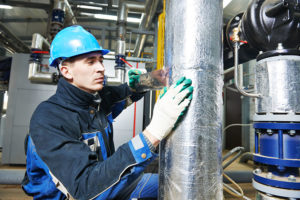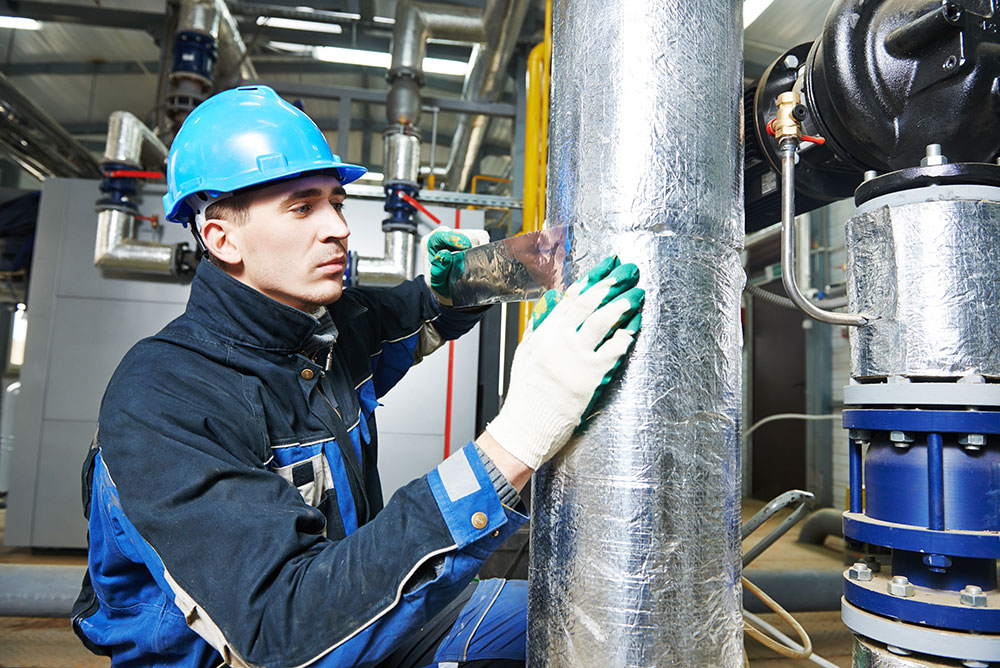Disclaimer: The information on our website is provided for general information purposes only. We make no representations or warranties of any kind, express or implied, about the completeness, accuracy, reliability, suitability or availability with respect to the website or the information contained on our website for any purpose. Any reliance on such information is therefore strictly at your own risk and we are not liable for any damages or losses arising out of or resulting from your reliance on any information contained on our website.
An insulator worker (or insulator) is a vital part of the construction process as they install the material that prevents structures from losing heat or air conditioning. Insulation also helps with the soundproofing of a structure as well. They would know how to read blueprints in order to ensure they properly install the right material and to specification.
Watch a video to learn more about what an insulation worker does:
How to Become an Insulation Worker

Most insulation workers do not require a specific formal education as their training is on-the-job. In this case, the person may start out as a helper. There are some unions and contractor companies that offer apprenticeship programs as well. This on-the-job training would also include mandatory Occupational Safety and Health Administration (OSHA) safety training on handling insulation and asbestos. In addition to this safety training, an insulation worker can also be trained to remove and handle asbestos through a program accredited by the U.S. Environmental Protection Agency.
Mechanical insulators are an exception, as they must complete a 4 to 5-year apprenticeship program. These apprenticeships are still on-the-job, paid training. However, the mechanical insulator would have completed at least 144 hours of technical training while accomplishing 2,000 hours on-the-job. The International Association of Heat and Frost Insulators (link opens in a new window) has an apprenticeship page with more information and a link to find an apprenticeship program in your area.
Job Description of an Insulation Worker
Along with installing material to insulate a building, an insulation worker would also replace insulation when needed. They would need to be able to measure the amount of material needed and then cut or trim the material to fit the space. They may use hand tools in order to apply the insulation as well. There are also various types of insulation. Some insulation is applied via a spray foam so an insulation worker would need to use an air compressor.
An insulation worker may also insulate any object that needs to conserve energy and not lose heat or must keep a cool temperature. For instance, they may insulate pipes, mechanical objects, and broilers just to name a few. Insulation also helps protect others from getting burned if they come in contact with an object, such as a hot pipe for example. Some insulation workers are also trained to remove old installation that contains asbestos. Asbestos is a hazardous material, and old insulation containing must be handled carefully and removed before the installation can be replaced.
Insulation Worker Career Video Transcript
Keeping out the winter chill… and staying cool inside when outdoor temperatures rise… insulation maintains conditions at the right temperature and humidity both for human comfort and safe operation of equipment. Insulation workers install and replace insulation materials for buildings and mechanical systems – to balance temperatures and save on energy. These workers remove old insulation and safely dispose of it. Using blueprints to guide their work, they use math skills to figure out the insulation needed, and to measure and cut it accurately.
Insulation workers are skilled with both power and manual tools for cutting materials, welding fittings and stapling insulation in place. They work full time, spending much of the day on their feet, bending, or kneeling in confined spaces. When needed, they wear suits, masks, and respirators to protect against hazards. There are two types of insulation workers: Floor, ceiling, and wall insulators install insulation indoors— in attics, under floors, and behind walls in homes and other buildings.
Most work for drywall and insulation contractors. These workers learn on the job; no formal education is required. Mechanical insulators apply insulation both indoors and outdoors to equipment, pipes, or ductwork at commercial buildings. Most work for building equipment contractors, or drywall and insulation contractors. Mechanical insulation workers typically complete a 4-year apprenticeship after earning a high school diploma or equivalent.
Article Citations
Bureau of Labor Statistics, U.S. Department of Labor, Occupational Outlook Handbook, Insulation Workers.
National Center for O*NET Development. 47-2131.00. O*NET OnLine.
The career video is in the public domain from the U. S. Department of Labor, Employment and Training Administration.

